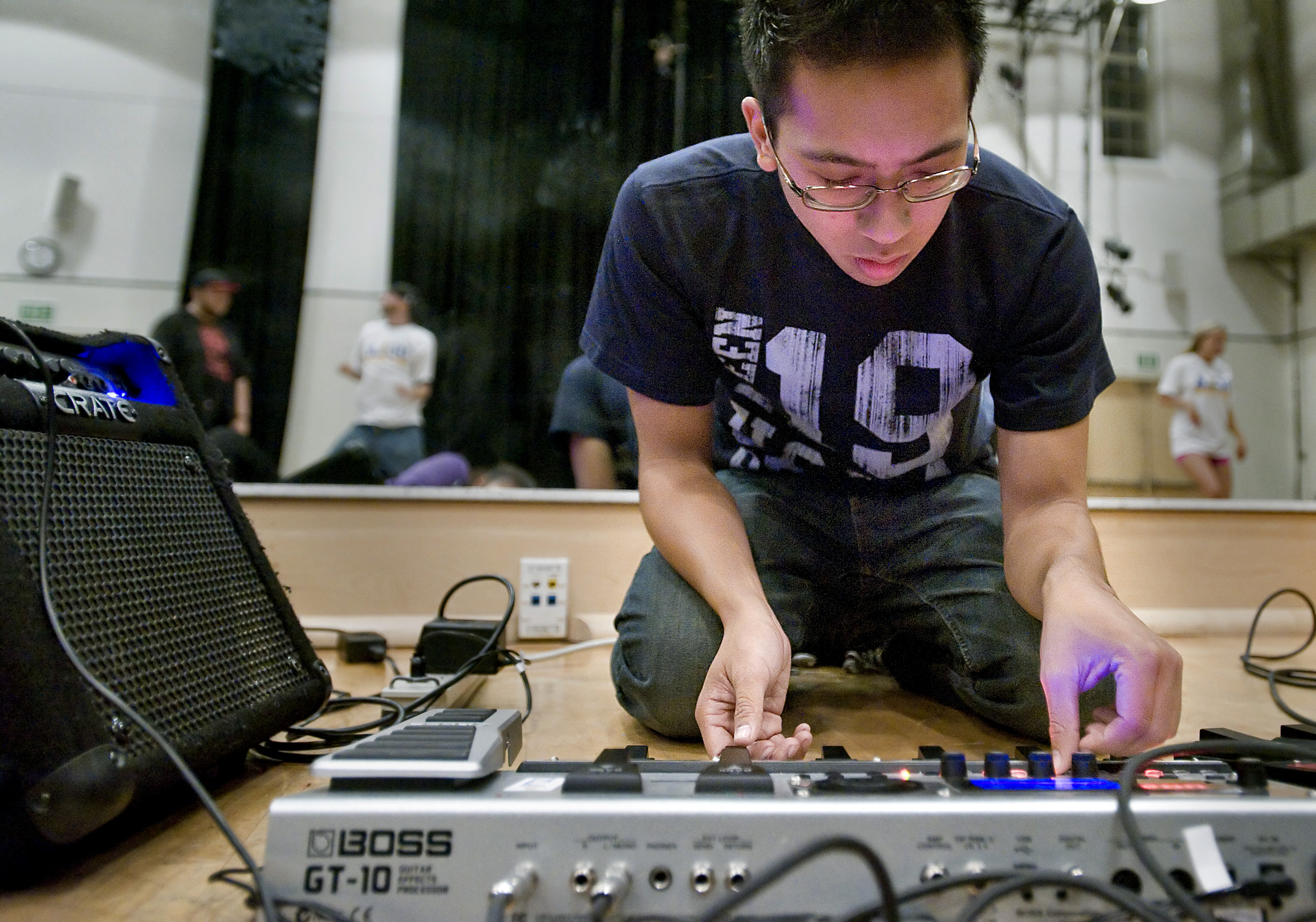As most students focus on studying for final exams, one group has turned its attention toward a very different activity: sex.
Members of the UCLA Sex Squad passed out condoms last week on Bruin Walk to promote safe sex and advertise their upcoming show about sexual health.
On Wednesday, the Sex Squad will present “48 Hours to Action” to educate students in an entertaining way about HIV/AIDS and sexual health in honor of World AIDS Day.
Getting people to laugh is the key to relieving anxiety and opening a dialogue about HIV/AIDS and safe-sex practices, said Robert Gordon, director of special projects for the UCLA Art and Global Health Center, the nonprofit organization that holds the event, and a former Daily Bruin sports editor.
“HIV is a serious and scary topic,” Gordon said. “It’s exactly because it’s scary that we come at it with humor.”
This year’s “48 Hours to Action” marks the debut of the Sex Squad, a new group of undergraduate artists that emerged from the former AIDS Performance Team and broadened its focus to sexual health in general, Gordon said.
The Sex Squad’s 19 undergraduate performers will sing, dance and act in skits that they came up with in a 48-hour period.
In October, the Sex Squad members spent two weeks learning about HIV/AIDS, discussing their own sexual decisions and talking to people who live with HIV.
At the end of those two weeks, the team spent 48 hours creating performance pieces around a single theme meant to communicate the urgency of the fight against HIV/AIDS: “Show me.” A committee chose this theme because it demanded an immediate response, Gordon said.
Veline Mojarro, a third-year theater student, described the fast-paced process of coming up with performance ideas as a “marathon of skits.”
The show will be a half-sketch comedy and half-abstract performance, which includes singing and dancing, said Harry Weston, a third-year world arts and cultures student and a returning member from the AIDS Performance Team.
Next quarter, the Sex Squad will combine the best material from “48 Hours to Action” and the second part of the October two-week intensive. The Sex Squad will then perform the material for students during the group’s tour of local high schools ““ an audience the members understand is distinct from their college audience at “48 Hours to Action.”
While all of the group’s performances are geared toward education, “48 Hours to Action” has more of an aesthetic focus, Weston said.
The Sex Squad’s high school show, however, will be more explicitly educational.
“The show on (Wednesday) is for a college audience,” Weston said. “So some of the art pieces are abstract. It gets heavy and intellectual. When we go to the high schools … it’s just not the right place for it. We have more important information we need to get across.”
When performing for high school students, the group members focus on the educational aspect because the schools they go to lack sexual education, Weston said.
With Wednesday’s performance, Weston said that he hopes to help the audience move past its fear of HIV/AIDS to something much more positive.
“Once you first realize the seriousness and the fearful part of the epidemic, then you can laugh, then you can smile,” Weston said. “And that fear becomes something much more useful than fear ““ it becomes knowledge. Knowledge can save lives.”
Although this is the fifth year of the event, it is the first year that a collective group assembled the show, as opposed to having artists submit individual pieces.
In the past, individual artists who did not know much about HIV created work that was vague because they did not want to be disrespectful or simply did not know what to say.
The show now consists solely of material created and performed by the collective members of the Sex Squad.
“We want people to see how art can inspire conversation and action,” said Ivy Hurwit, a third-year world arts and cultures student and one of the producers of the event. “What better way (to address HIV/AIDS) than with art? Hopefully people will be inspired to protect themselves and defeat HIV/AIDS.”
